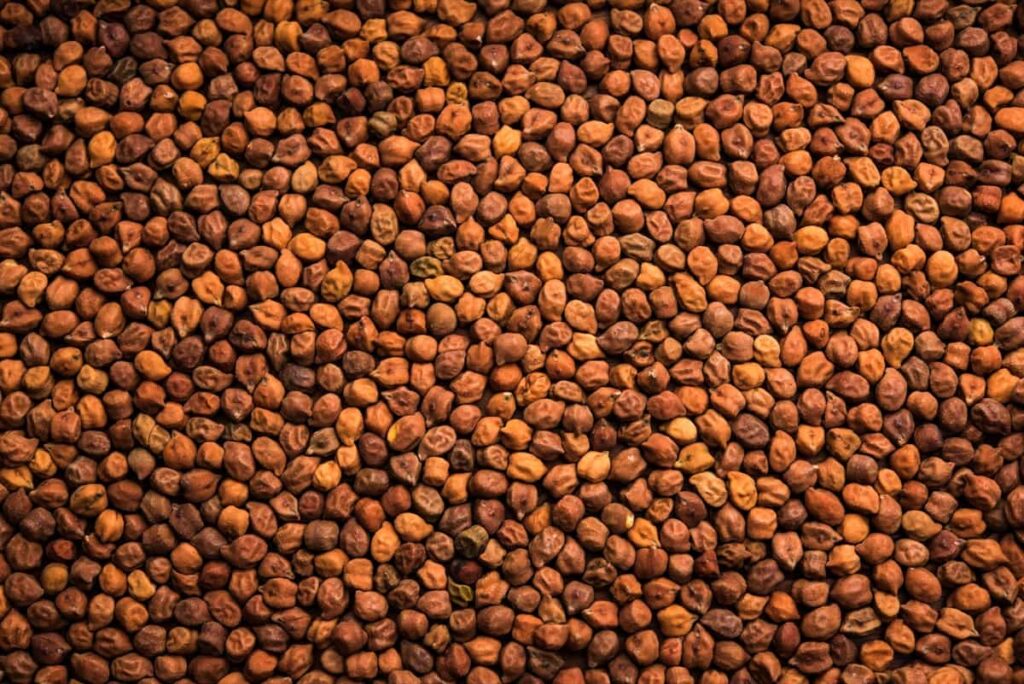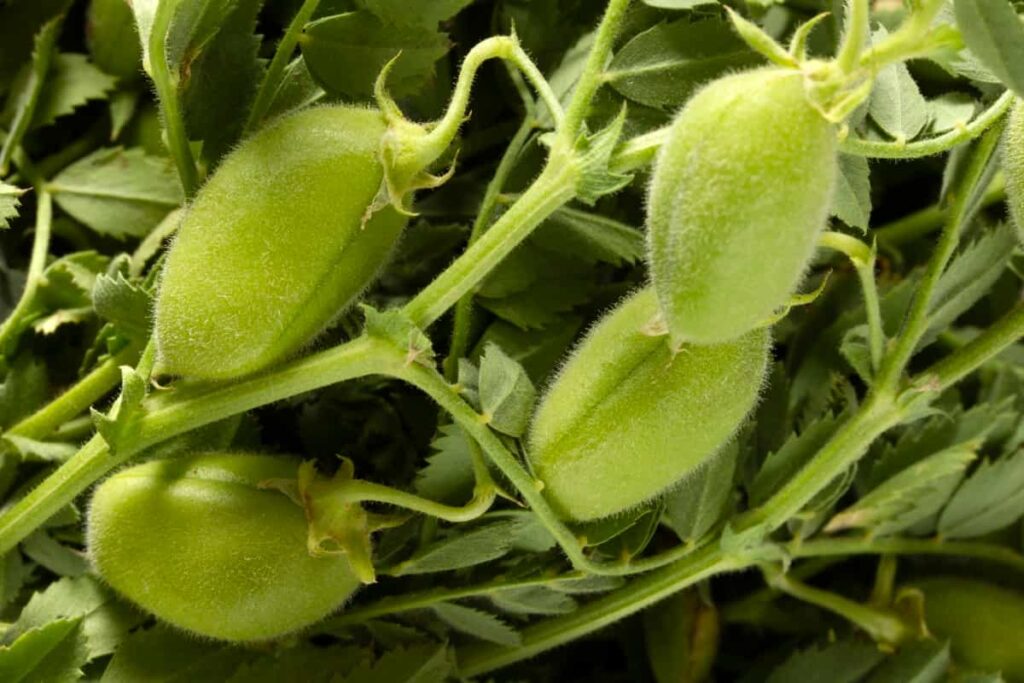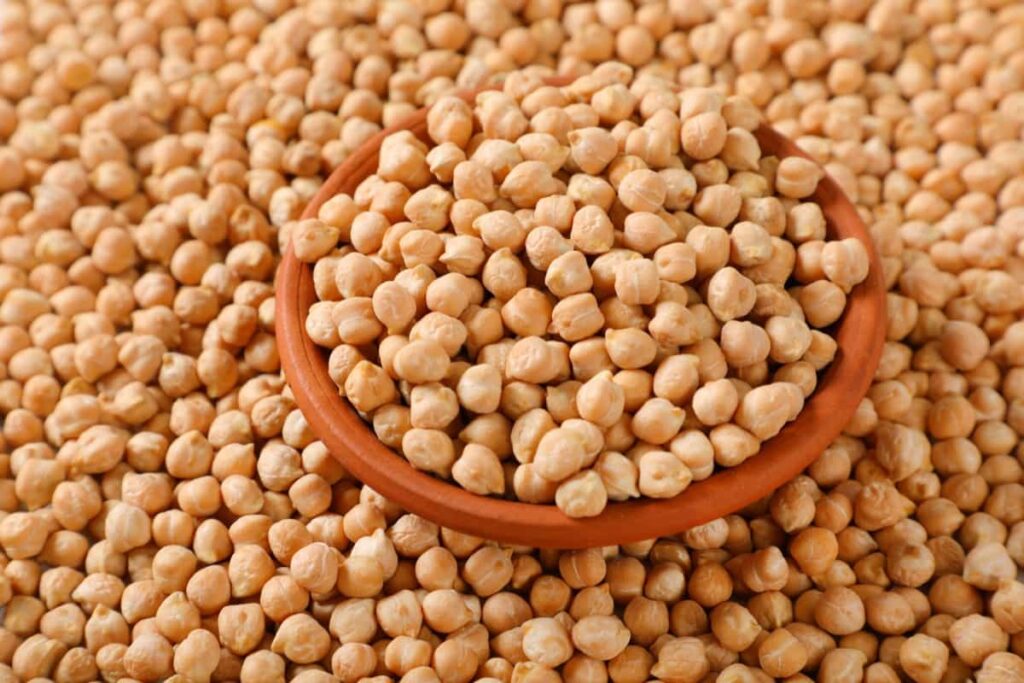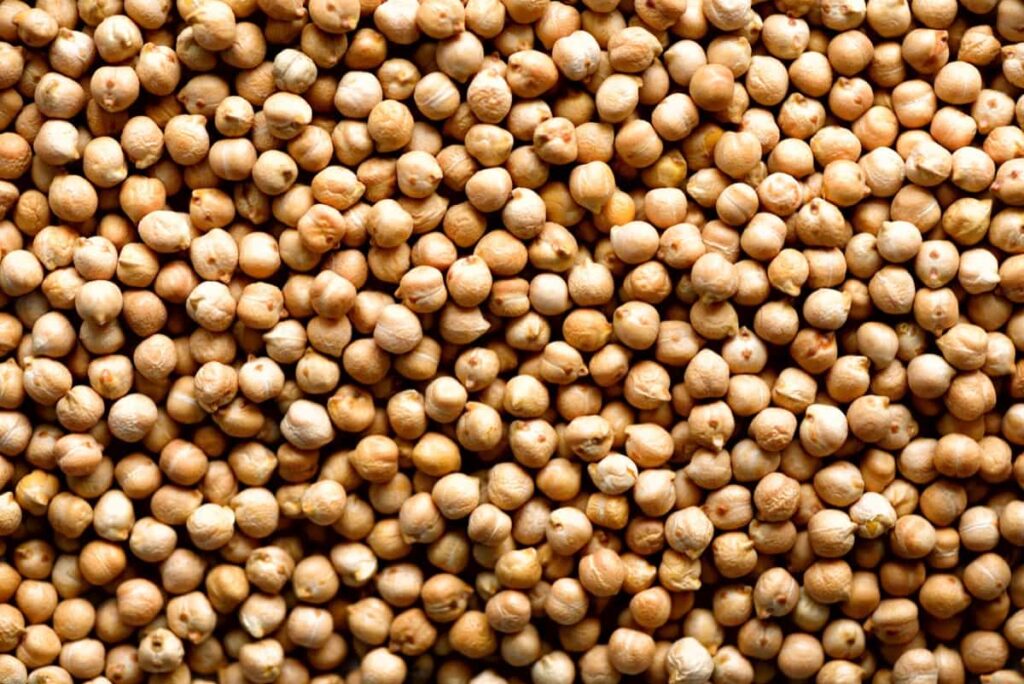Bengal Gram, also known as Chana or Chickpea, holds immense importance in Telangana, contributing significantly to the state’s agricultural sector. Bengal Gram requires less water compared to other crops grown in Telangana’s arid regions. It plays a crucial role in enhancing food security in Telangana.

Bengal Gram Farming in Telangana
Climatic Conditions for Bengal Gram Farming in Telangana
In Telangana, the climatic conditions are well-suited for cultivating this nutritious and versatile crop. Telangana experiences a semi-arid climate with hot summers and moderate winters. The temperature levels from 25°C to 40°C during the growing season, which is ideal for the growth of Bengal Gram. The region obtains an annual rainfall of around 900-1000 mm, which further supports its cultivation.
Soil Requirements for Bengal Gram Cultivation in Telangana
This hardy crop prefers well-drained soils with good organic matter content. The ideal pH range for growing Bengal Gram is slightly acidic to neutral, around 6.0-7.5. Sandy loam or clay loam soils are best suited for this legume as they offer good drainage while retaining enough moisture for healthy growth.
Varieties of Bengal Gram Suitable for Telangana
The popular variety is NBeG-3, which is known for its high yield potential and tolerance to various diseases. It is a widely cultivated Bengal Gram variety in Telangana due to its adaptability to the region’s climatic conditions. Other commonly grown varieties are NBeG-49 and KAK2, which offer good resistance against pests and diseases.
In addition to these varieties, other options like JG 74-8 and Phule G-1 are also available for Bengal Gram cultivation in Telangana. These varieties have shown promising results in terms of both yield and quality. Pusa Vishwas is an improved desi-type chickpea variety that exhibits better adaptability to diverse agro-climatic conditions in Telangana.
In case you missed it: Profitable Organic Eggplant/Brinjal Cultivation in West Bengal: A Production Guide for Beginners

Land Preparation and Sowing of Bengal Gram in Telangana
Before sowing the seeds, it is essential to ensure that the land is properly prepared to provide optimum conditions for germination and growth. The field should be plowed thoroughly to remove any weeds or debris. Once the land is prepared, it’s time to sow the Bengal Gram seeds. The best time for Bengal Gram sowing is usually between October and November when the temperature and moisture levels are favorable.
Bengal Gram seeds can be sown by broadcasting or drilling methods, depending on personal preference and farm size. After sowing, it is essential to ensure proper irrigation for seed germination and establishment of plants. Adequate water supply at regular intervals promotes healthy growth of Bengal Gram plants.
Irrigation Methods for Bengal Gram Farming in Telangana
An adequate water supply is essential for proper growth and development of the crop. The commonly used method is furrow irrigation, where small channels or furrows are created between rows of plants. Water is then allowed to flow slowly through these furrows, ensuring that it reaches the roots of the plants effectively.
Drip irrigation is another popular method used by farmers. In this technique, water is delivered to the root zone through a network of pipes with emitters. Sprinkler irrigation can also be employed for Bengal Gram cultivation. It helps maintain uniform moisture levels across the field, promoting healthy plant growth.
Pest and Disease Management in Bengal Gram Farming in Telangana
The Bengal Gram crop is affected by several pests and diseases that can affect crop yield. Farmers need to be proactive in identifying these issues to ensure a healthy crop. The common pest affecting Bengal Gram is the pod borer. This pest damages the pods, leading to reduced yield. To control pod borers, farmers can use chemical insecticides or opt for biological control methods such as releasing natural predators like Trichogramma chilonis.
Aphids are also a common pest found on Bengal Gram plants. These tiny insects suck sap from leaves, causing yellowing and stunted growth. Spraying neem oil or using insecticidal soaps can effectively control aphid infestation. Other pests, like gram caterpillars, leafhoppers, whiteflies, etc., may also pose threats to crop health. By implementing integrated pest management strategies that include monitoring, prevention, and timely intervention when necessary, farmers can mitigate losses due to pests and diseases in Bengal Gram farming in Telangana.
In case you missed it: Growing Pineapple Organically in West Bengal: Farming Practices and Production Guide

Fertilizer Application for Bengal Gram Cultivation in Telangana
It is essential to provide the proper nutrients at the right time to promote healthy plant development and maximize productivity. Before applying fertilizers, it is necessary to conduct soil testing to determine its nutrient content and pH level. The primary nutrients needed by Bengal Gram plants are nitrogen (N), phosphorus (P), and potassium (K). Farmers can use both organic and inorganic fertilizers for Bengal Gram cultivation.
Organic options include farmyard manure or compost, which improves soil fertility over time. Inorganic fertilizers like urea, diammonium phosphate (DAP), or muriate of potash (MOP) provide instant nutrition to the plants. It is important to follow dosage guidelines provided by agricultural experts or local authorities regarding fertilizer application for Bengal Gram farming.
Harvesting and Yield of Bengal Gram in Telangana
The crop should be harvested when the pods turn yellowish-brown, indicating maturity. Harvesting Bengal Gram too early can result in lower yield, while delaying the harvest can lead to pod shattering and loss of grains. To harvest Bengal Gram, farmers usually cut the plants close to the ground using sickles or other cutting tools.
Then, they leave the plants on the field for a few days to dry before threshing. The average yield of Bengal Gram in Telangana varies depending on various factors such as the variety used, agronomic practices followed, and weather conditions. However, under good management practices, farmers can expect the average yield per acre to be about 6-9 quintals.
Marketing and Economics of Bengal Gram Farming in Telangana
With proper planning and strategy, farmers can maximize their profits. The primary consideration for marketing Bengal Gram is identifying potential buyers. Farmers can sell their produce directly to local markets or through agricultural cooperatives. They may also explore export opportunities, as there is a growing demand for Indian pulses in international markets. Furthermore, promoting organic farming practices and obtaining certifications can open up niche markets with premium pricing.
In terms of economics, calculating input costs such as seeds, fertilizers, labor expenses, irrigation charges, etc., helps determine the profitability of Bengal Gram cultivation. While income from Bengal Gram farming varies depending on several factors, including yield per acre and prevailing market prices, diversifying income streams by engaging in value-added activities like processing or packaging could provide additional revenue sources.
Frequently Asked Questions (FAQ) on Bengal Gram Farming in Telangana
Are There Any Specific Nutrient Requirements for Bengal Gram Cultivation?
Yes. Nitrogen, phosphorus, potassium, and other micronutrients like zinc (Zn) play a crucial role in ensuring healthy plant growth and high yield of Bengal Gram crops.
In case you missed it: Best Package Practices to Grow Chickpeas: Cultivation and Production of Bengal Gram/Chana

Can Intercropping Be Practiced with Bengal Gram Farming?
Yes. Intercropping techniques such as cultivating pigeon peas or cereals alongside Bengal Gram not only maximize land utilization but also enhance overall productivity.
Are There Any Government Schemes or Subsidies Available for Bengal Gram Farmers in Telangana?
Yes. The Government of Telangana offers various schemes and subsidies to promote agriculture, including support for inputs like seeds, fertilizers, and machinery. The main notable schemes are the Rythu Bandhu and PMFBY (Pradhan Mantri Fasal Bima Yojana), which provide direct investment support to farmers for their agricultural activities.
Conclusion
Bengal Gram is packed with proteins, fibers, vitamins, and minerals. This makes it an excellent addition to a balanced diet. Bengal Gram farming contributes significantly to rural economic development by generating employment opportunities in both on-farm and off-farm activities such as processing and marketing. Telangana’s favorable climatic conditions make it suitable for Bengal Gram cultivation.
- Profitable Village Farming Business Ideas in 2024
- High-Yield Aquaculture: Fast-Growing Fish for Farming
- Effective Fish Pond Construction Techniques for Beginners
- Irrigation and Water Management in Pineapple Farming
- Blossom to Harvest: Mastering Flowering and Pollination in Papaya Farming
- Pig Fattening Essentials: From Selection to Sale for Beginners
- Raising Wagyu Cattle: A Complete Guide for Premium Beef Production
- Soil Types and Their Water Holding Capacity
- Optimizing Irrigation Schedules for Coconut Groves for Enhanced Yield
